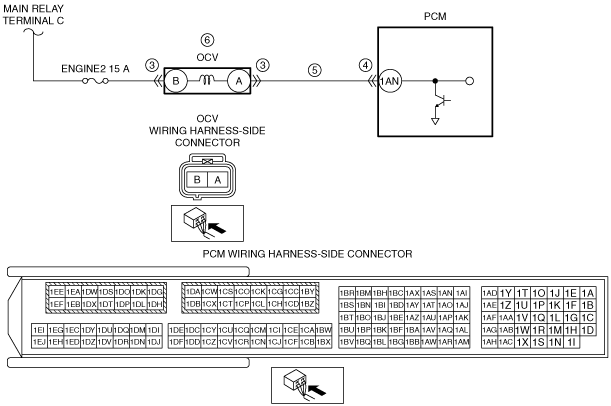DTC P2091:00
OCV circuit high input
DETECTION CONDITION
Type A VIN
• The PCM monitors the OCV current. If the PCM detects that the OCV control current (calculated from the OCV) is above the specification current, the PCM determines that the OCV circuit has a malfunction.
Type B VIN
• The OCV control voltage relative to the PCM control is too high.
Diagnostic support note
• This is a continuous monitor (CCM).
• The check engine light illuminates if the PCM detects the above malfunction condition during the first drive cycle.
• FREEZE FRAME DATA (Mode 2)/Snapshot data is available.
• DTC is stored in the PCM memory.
FAIL-SAFE FUNCTION
Type A VIN
• Performs the exhaust variable valve timing control with a maximum cam retard request.
Type B VIN
• Set the exhaust variable valve timing control to the maximum advanced position.
POSSIBLE CAUSE
• OCV connector or terminals malfunction
• PCM connector or terminals malfunction
• Short to power supply in wiring harness between OCV terminal A and PCM terminal 1AN
• OCV malfunction
• PCM malfunction
